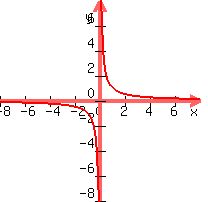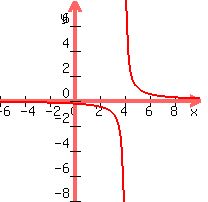Question 687244: For the function g(x) = 1/x-4 + 2:
Write the equations of the asymptotes and label them on the coordinate plane.
Enter at least five values in the table of values.
Graph the function on the coordinate plane.
Answer by KMST(5328)   (Show Source): (Show Source):
You can put this solution on YOUR website! I believe you mean g(x) = 1/(x-4) + 2,
which I can write as
 . .
The function   is sort of an ancestor of your function. is sort of an ancestor of your function.
It has the x- and y-axes for asymptotes.
The y-axis,  is a vertical asymptote is a vertical asymptote
because the function does not exist for  (it is not continuous at (it is not continuous at  ) )
but as you approach  , from either side, , from either side,
 grows without bounds. grows without bounds.
The horizontal x-axis,  , is an asymptote because as , is an asymptote because as  grows larger (at both ends of the x-axis), grows larger (at both ends of the x-axis),
 approaches zero. approaches zero.
The function  
is the same, but moved 4 units to the right, a closer ancestor.
Its asymptotes are  . .
 (vertical asymptote, where the function is not continuous), and (vertical asymptote, where the function is not continuous), and
 (again). (again).
Adding  to that function gives you to that function gives you  . .
The graph is 
and the asymptotes are  and and
 . .
Just five points seems too little for this function, but the symmetry might help.
For  , ,  . .
(Symmetrically, for  , ,  . .
For  , ,  . .
(Symmetrically, for  , ,  . .
For  , ,  . .
(Symmetrically, for  , ,  . .
For , ,  . .
(Symmetrically, for  , ,  . .
For , ,  . .
(Symmetrically, for  , ,  . .
We can plot those points as blue dots and connect them.
We can draw the asymptotes in green too.
|
|
|